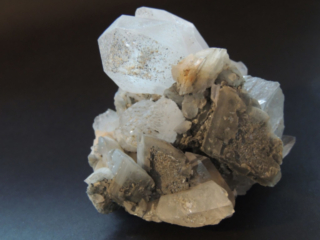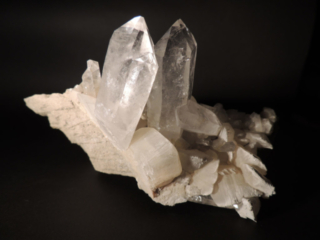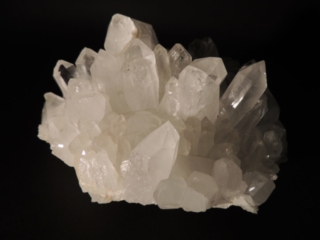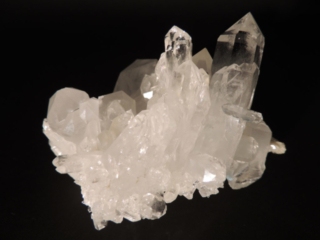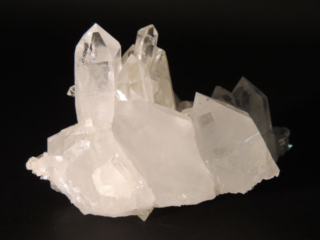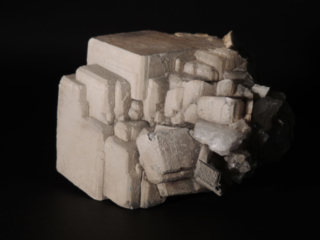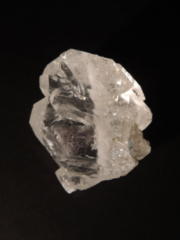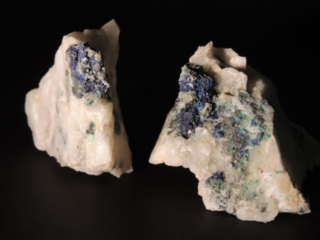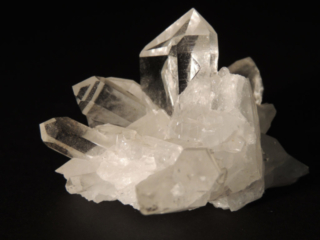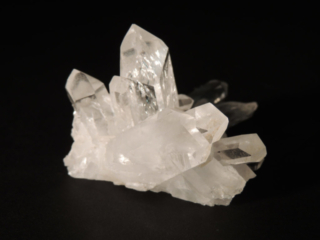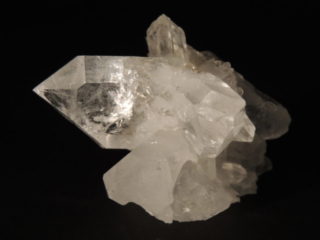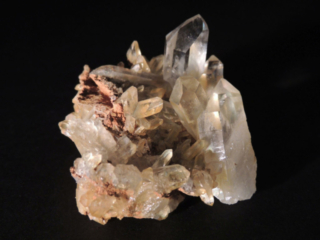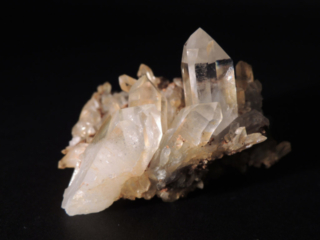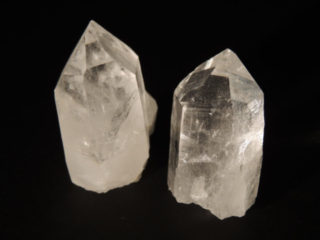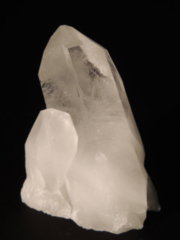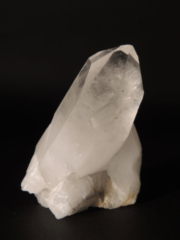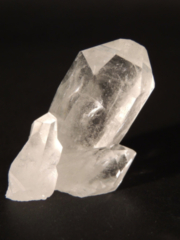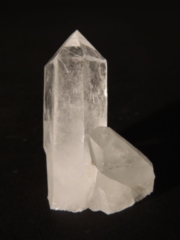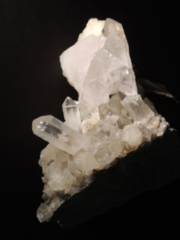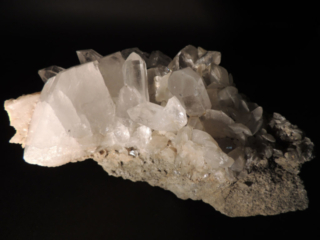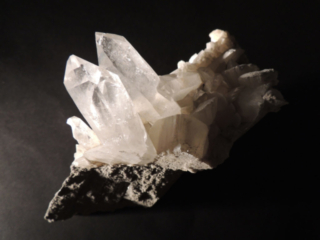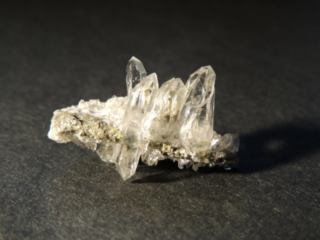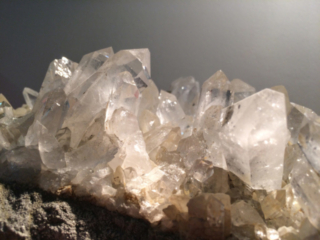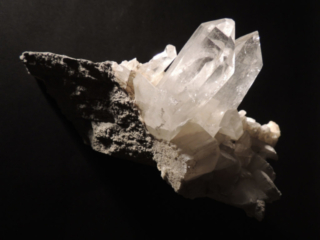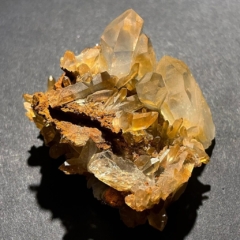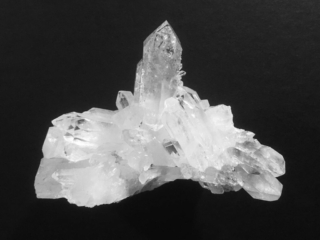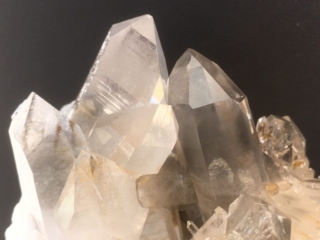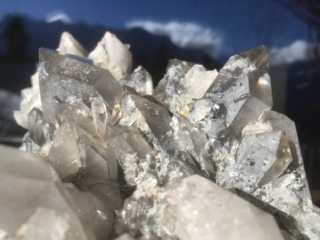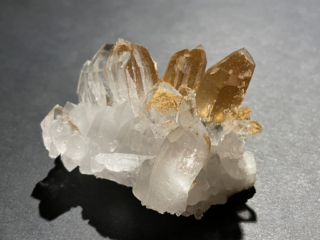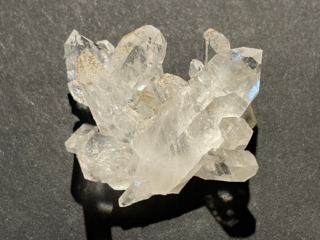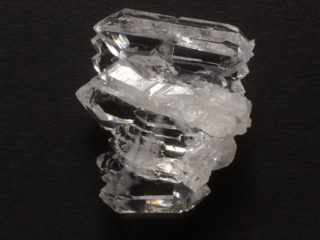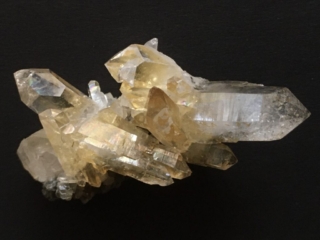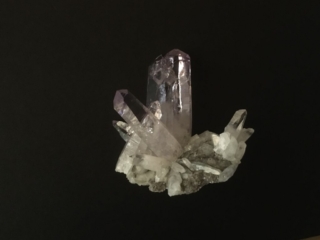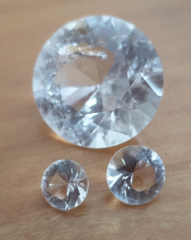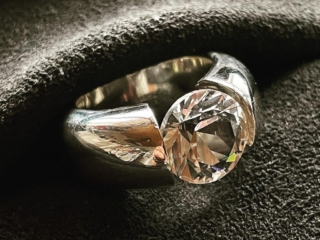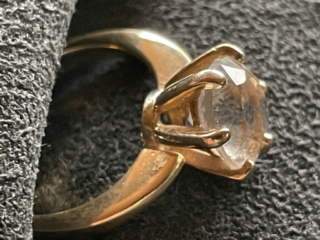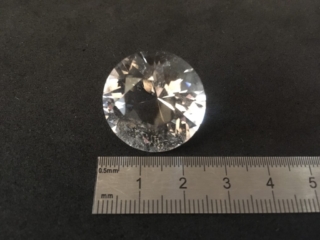Crystalseeker - Portrait
Growen up in Maienfeld at the foot of the Falknis, I discovered my interest in stones and the mountains at an early age. However, the fascination with rock crystals only ignited after my move in 2009 to Flerden, at the foot of the Piz Beverin. Here, the radiation developed into a passion, even a true addiction.
Over time, I learned to “feel” and read the mountain for crevices. As a good blaster, I must always maintain respect for nature, must constantly observe and be vigilant, need a great deal of perseverance and patience. I am happy about every find anew and I am grateful to be the first person to hold these million-year-old treasures of the Alps in my hands. Whether small, perfect points or large, kilogram-heavy specimens, the fascination for rock crystals and minerals never lets me go. As a passionate spotter around the Piz Beverin, I have been able to bring many beautiful pieces to light. Every single find has its own, very special story to tell. Since 2018, I have been doing the blasting more intensively during the summer months.
Many of my finds I offer for sale.
Rock crystals
The joy of natural, radiant rock crystal justifies the ever-increasing effort with which these natural wonders are wrested from the alpine mountains from year to year. The crystal seekers, in Switzerland called “radiant”, who often pursue their vocation and passion under the greatest dangers and efforts, do not, however, practice overexploitation. On the contrary, they are the preservers of these incredibly fascinating natural beauties. Indeed, if these precious treasures are not found, they will inevitably be destroyed by erosion over time.
At the cradle of these precious, sparkling prisms stands a word of somber timbre: magma. It stands for molten rock that pushes upward from the earth’s interior at a high temperature. Once upon a time, the entire globe consisted of this molten mass. As it cooled over millions of years, a crystalline crust formed on the surface. This first thin skin, which slowly thickened and hardened, grew into a mighty layer of rock and is the basis of all life on our earth. Our native rock crystals, these unique marvels of nature, were formed 12 to 20 million years ago, long before humans even existed. Through complicated movements of the earth’s crust, the folding of the Alps began about 200 million years ago. Under the pressure of the northward drifting African continental plate towards the European one, cracks and fissures formed in the rock masses. The resulting cavities filled with hot, aqueous solutions. These hydrothermal waters dissolved mineral substances from the surrounding rock and thus transported the quartz into the cavities. 12 to 20 million years ago, at temperatures between 300 and 450 degrees Celsius and enormous pressures of up to 3000 atmospheres, the crystals were formed. The fissures, which are found on the surface today, were covered several thousand meters during this time. In the course of long geological times, the Alps were eroded by weathering and erosion. Due to the beginning pressure relief and cooling, crystals crystallized out of the mineral solution in a very slow growth during 1 to 2 million years, which grew freely from the fissure wall into the fissure space. Also today the crystals grow under the same conditions in depths of approx. 7000 – 10000 meters under the earth’s surface. Chemically, rock crystal -the philosopher’s stone and the stone of science- is nothing else than the compound of the two most common elements of the earth’s crust: silicon and oxygen (SiO2), called quartz. Also in granite and gneiss, in sandstone and in many other rocks, quartz is usually the most important rock-forming mineral. It is easy to understand that therefore the oldest raw material of mankind was quartz. In the prehistory of man, the Stone Age, so named after this first raw material, quartz was processed and used for many things. This hard, tough and sharp stone, with which one could strike sparks and kindle fires, but with which one was also able to make tools and arrowheads, accompanied mankind from the beginning. In addition to this “ordinary quartz”, nature has also created the coveted, noble quartz, in well-formed and always fascinating crystals, transparent, colorless or in different shades.
As something very special, the bright rock crystal was already collected by the pile dwellers and was highly valued by many ancient cultural peoples and processed into cultic objects. The ancient Greeks called the rock crystal “Kristallos”, which means ice. Pliny (78 AD), a Roman writer, still believed that rock crystal was made of very solid frozen ice. He told: “Crystal is found only where winter snows bring the most severe cold”. Even in the Middle Ages, people still firmly believed that rock crystal was made of water that was frozen so solid that it could never thaw. It was not until the 16th and 17th centuries that the word cristallas began to take on its present general meaning. It was in Milan that the first craft of working with rock crystals was created. Clients for the highly talented artists were the church and the noble houses of Europe. Magnificent reliquaries, altar crosses, bowls, jugs, animal figures and much more were created. The raw material was found, even then only with great effort, in the Swiss Alps. The most beautiful, largest and clearest rock crystals were sold by our local shepherds and radiators at that time as so-called “Milanese goods” to the crystal cutters in Italy.
With the Enlightenment in the 18th century, naturalists began to take an interest in the other minerals, which were not yet known in detail. The monk Placidus a Spescha (1752 – 1833) from Disentis was one of the first to systematically explore the alpine mineral world. In the 19th century people interested in nature started to build up mineral collections. From now on, beautifully formed and undamaged minerals were in demand. Well-heeled collectors bought up the best specimens, which enabled some locals to earn a welcome extra income with blasting. With the alpine tourism of the 20th century, also foreigners started to search for minerals and to do blasting as a hobby. The royal of our crystals, the smoky quartz, shows the most different shades, with all nuances from a soft brown shimmer to a black morion. It is found mainly in alpine granite at altitudes above 2000 meters above sea level. Each smoky quartz originally crystallized as a colorless rock crystal and only received its current coloring in the course of millions of years by means of weak radioactive radiation from the surrounding rock.
Searching for Crystals
The word “seeking” or “seeker” comes from Central Switzerland. The crystals shining in the light reminded people of sun rays.
So one went looking for rays or just derived from it strahlen. Since time immemorial, ray seekers have searched for crevices in the Alps to retrieve their crystals.
In early times, people coveted them as tools and cult objects, then in the Middle Ages they were primarily processed into profane and secular jewelry.
In our time, the fascination of crystals and the search for them is unbroken. It is the aesthetics of the natural, unprocessed crystal, the geometry, the uniqueness of each piece that fascinate us today.
Most blasters do this activity as a hobby in their spare time. Professional blasters are the exception. Blasting requires a strong awareness of nature and very good knowledge of alpinism and geology. “Blasting also requires an active spirit, a clear mind and a lot of imagination,” is how Peter Flurin Maissen (natural scientist and blaster in Surselva, Bündner Oberland), who died in 1998, describes the traits of a successful blaster. A mediocre man would never become a good radiator, because he would lack the necessary powers of observation and the calculating restraint. “These prerequisites must be acquired through long struggle.” The blaster’s most important tool is the blasting stick, a kind of crowbar that is also used as an extended chisel, a hook, or a walker. However, basic equipment to open a cleft also includes a fist and pointing iron. Equally indispensable is a hook (dimple) for the finest work to recover the hard but also very vulnerable crystals intact.
Sale
If you are interested in one or the other piece, please feel free to contact me for further information so that we can organize a visit to me in Flerden or a meeting elsewhere. My stock includes countless beautiful pieces in all price ranges, from small tops to large specimens.
All rock crystals and minerals (azurite, malachite, cinnabar, limonite, albite, calcite and pyrite) were found exclusively by myself and cleaned with much passion.


